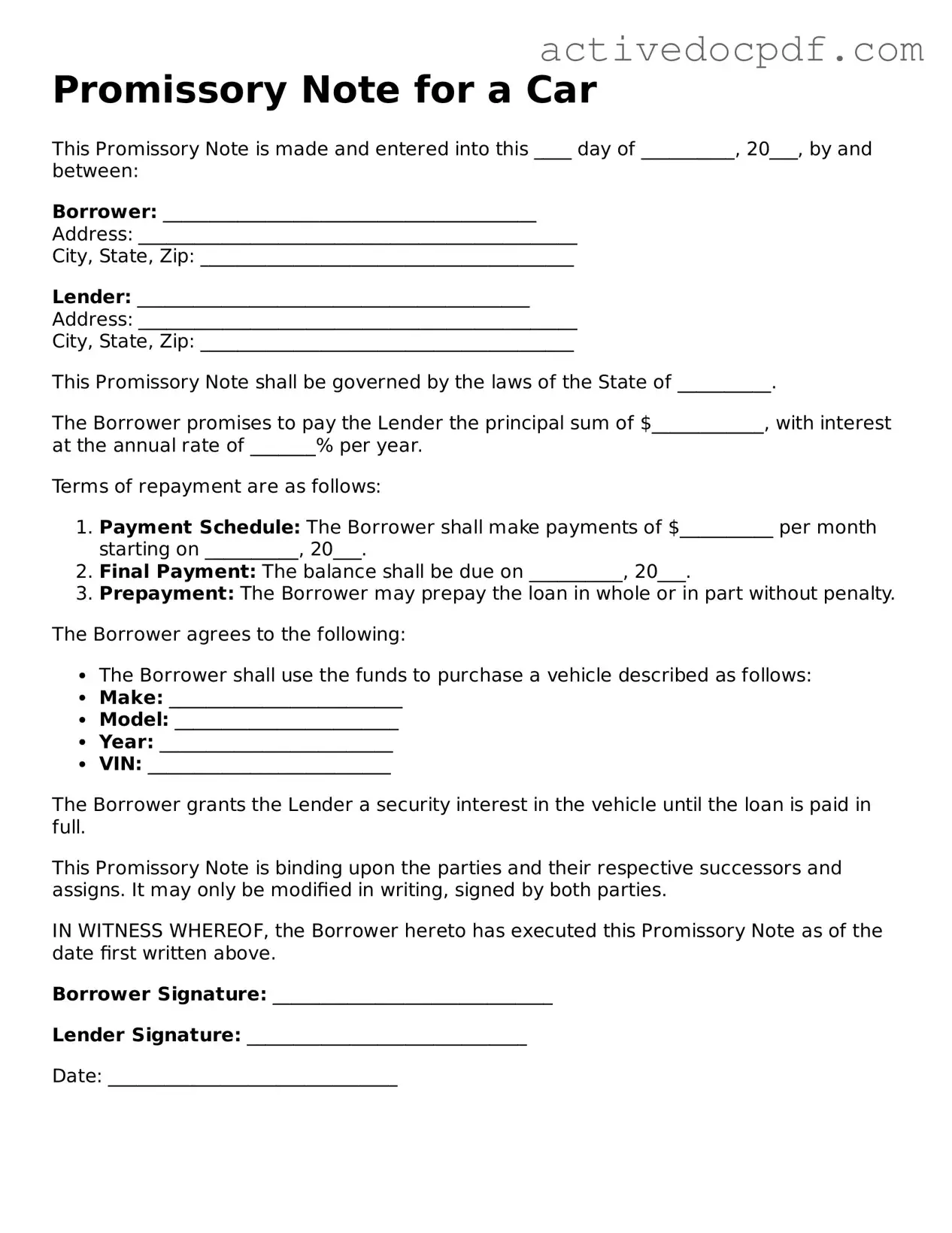Guide to Filling Out Promissory Note for a Car
Once you have the Promissory Note for a Car form in hand, the next steps involve carefully filling it out to ensure all necessary information is provided. This form is crucial for outlining the terms of the loan agreement between the borrower and the lender. Follow the steps below to complete the form accurately.
- Begin by entering the date at the top of the form. This should reflect the date you are filling out the document.
- Provide the full name of the borrower. Make sure to include any middle initials if applicable.
- Next, enter the borrower's address. Include the street address, city, state, and zip code.
- Fill in the lender's name. This is the individual or institution providing the loan.
- Input the lender's address, ensuring you include all relevant details like street, city, state, and zip code.
- Specify the total amount of the loan. This is the amount being borrowed to purchase the car.
- Indicate the interest rate for the loan. This can be a fixed or variable rate, depending on your agreement.
- Detail the repayment schedule. Include how often payments will be made (monthly, bi-weekly, etc.) and the duration of the loan.
- Include any late fees or penalties for missed payments. Clearly outline these terms to avoid confusion later.
- Provide a section for both parties to sign and date the form. This signifies agreement to the terms laid out in the note.
After completing the form, review it for accuracy. Both the borrower and the lender should keep a copy for their records. This ensures that everyone involved has a clear understanding of the loan terms.
